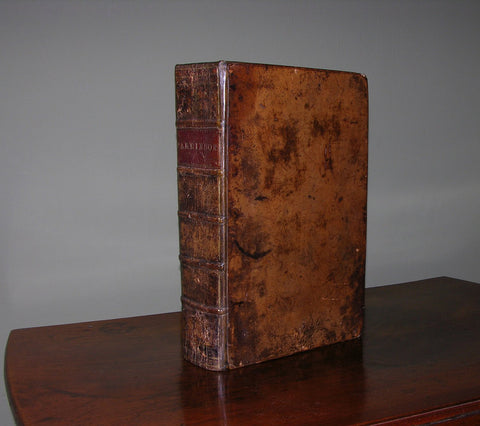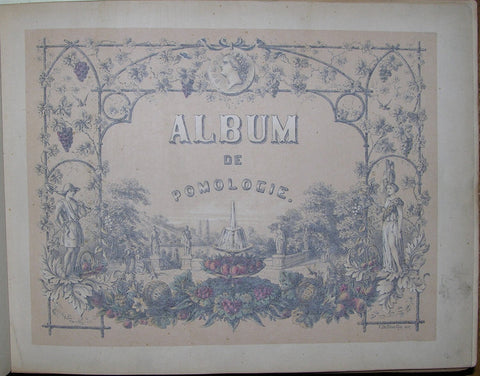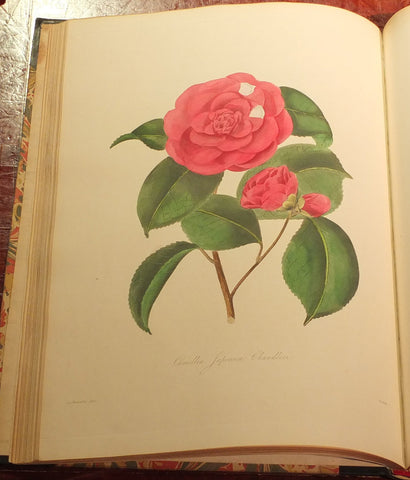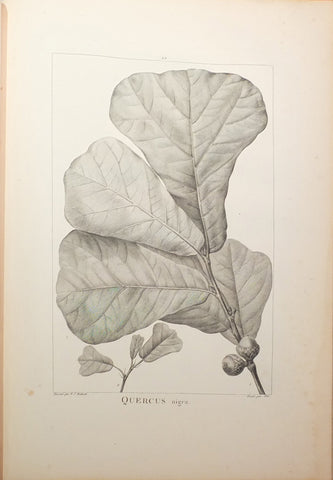John Parkinson (1576-1650), Theatrum Botanicum, The Theater of Plants
John Parkinson (1576-1650)
Theatrum Botanicum, The Theater of Plants
London: Thomas Cotes, 1640.
Folio (13 4/8 x 8 1/8 inches). Additional engraved title-page with portrait of the author by William Marshall, in excess of 2,000 woodcut botanical illustrations throughout, sectional head- and tail-pieces and initials (last leaf laid down, one or two marginal tear s with early repairs affecting the image on page 403, some minor spotting and a few mostly marginal stains).
Contemporary calf (rebacked preserving the original spine, extremities a bit scuffed).
Provenance: Modern bookplate of Marshall on the front paste-down.
"one of the two main pillars of botany in England till the time of Ray" (Henrey, p. 79, quoting the 19th-century botanist Sir James Edward Smith).
First edition. A founding member of the Society of Apothecaries in 1617, Parkinson's best-known work is his "Paradisi in sole paradisus terrestris, or, A Garden of All Sorts of Pleasant Flowers . with a Kitchen Garden . and an Orchard" (1629). "The book of more than 600 pages was dedicated to Queen Henrietta Maria, for which Charles I gave him the title of "botanicus regius primarius".
This was the first work published on English gardening, and it had descriptions of almost 1000 plants, with many of the entries giving evidence of cross-breeding and careful selection. Parkinson's second work, which occupied him for many years, was "Theatrum botanicum" (1640), with more than 1700 pages. This described some 3800 plants and showed his extensive reading of the period's authorities; of particular value was the almost entire incorporation of Caspar Bauhin's "Pinax", for its synonyms. Parkinson divided plants into seventeen 'tribes', based partly on their medicinal qualities and partly on habitat" (DNB).
Parkinson identified 28 new British species in his "Theatrum." including the strawberry tree (Arbutus unedo) of western Ireland, and the lady's slipper orchid (Cypripedium calceolus) of Lancashire. "The descriptions in many instances are new, and great care was exercised to secure accuracy in indicating localities... His arrangement, founded sometimes on medicinal qualities, sometimes on habitat, sometimes on apparent botanical differences, shows how little progress was made in classification by the herbalists" of this period (Hunt, quoting J. R. Green, History of Botany in the United Kingdom, 1914). Henrey 286; Hunt 235; Nissen BBI 1490; STC 19302.
We Also Recommend























